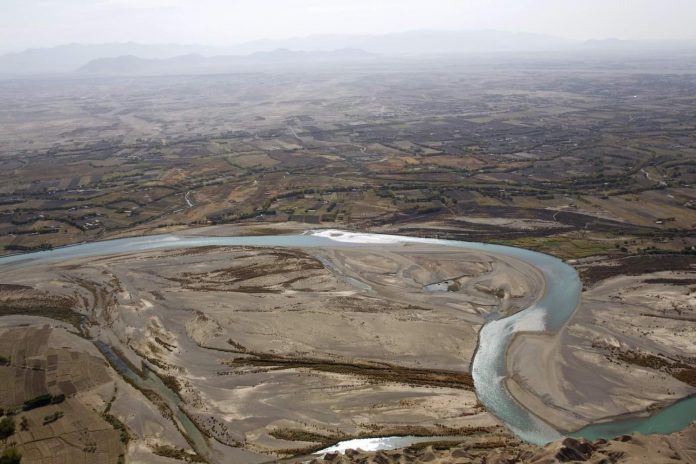Malik Zaeem Ul Hassan
Unrest was reported on the border of Afghanistan and Iran in last week of May, 2023. Tensions erupted on the water issue of Helmand River. The 1150 km long water system emerges from Hindu Kush Mountain Range, passes through Afghanistan, irrigating its lands, and feeds into Iran’s arid eastern regions. The water issue, however, was mere a tipping point in Iran-Taliban relationship, as ties had been fraying for weeks. Both have accused the other side for starting the violent clash which killed three soldiers, two Iranian border guard and a Taliban fighter.
Afghanistan and Iran, have had water related issues for decades. The 1973 treaty entails that Iran has the right to get around 820 million cubic meters of water annually under normal circumstances. The Taliban authorities have previously undone the work of Ghani government which limited the supply of water to the Iran due to the Kamal Khan Dam in Nimroz and asking for fuel to get a barter. This effort of Taliban regime received a warm welcome from the Iranian authorities. No sooner, amid the protests of local farmers the Taliban regime realized that they must not let their farmers suffer and thus, lead spokesperson of the Taliban government Zabiullah Mujahid announced revisiting the 1973 Afghan treaty due to the droughts Afghanistan is facing. The trust deficit between the both sides coupled with mismanagement of previous governments are the reason both states are unable to reach a feasible permanent solution.
Both Iran and Afghanistan face crucial water scarcity challenges amid climate change. Afghanistan was ranked 3rd on the Emergency Watchlist 2023 which was issued by the International Rescue Committee which depicts the way countries are on the brink of havoc due to climate change. Meanwhile, Iran has been facing water scarcity for last four decades. They have diverted the pathway of rivers to provide water for heavy steel industries which resulted in the disruption of natural water cycle. Dried up rivers, barren lands and serious drought year in last half century prompted the farmers to protest against the authorities back in 2021. Moreover, Iranian Meteorological Organization has highlighted that around 97% of the country is affected with droughts. Washington Institute, while giving the same statistics further added that 11 mega cities in are suffering from water stress and World Resources Institute has ranked Iran 24th on water stressed nation’s list.
Recent violent clashes were the aftermath of the assertive demand of Iranian President Ebrahim Raisi to respect and not to infringe the water rights of Iran as per the treaty signed in 1973 which was not at all entertained by the Taliban regime. The statement was given in Sistan which is the area that has a rough topography and it is dependent on the Helmand river system. The Foreign Minister of Iran Amir Abdollahian asked the Taliban government to open the gates of Kajiki dam, built on the Helmand river, to irrigate Iran and Afghanistan. The request was denied with a statement that water levels in Afghanistan are already low that it would not have any effect on the river even if the gates are open.
Prior to this, violent clash between two sides were reported in the month of January due to the mistreatment of refugees at Afghan border, and Amnesty International in August 2022 reported the unlawful killings of 11 Afghans. According to data from UN High Commissioner of Refugees Iran continues to host around 600,000 Afghan citizens that live in Iran, 7,80,000 refugees and around 2.1 million are those who are yet to be documented. According to UNHCR report, governments have estimated that nearly 500,000 to 1000,000 have fled to Iran after mid 2021. This major exodus of people has resulted in Iran to send back refugees to Afghanistan and the process has started since November 2021.
Afghanistan and Iran are likely to find a solution which stems from the negotiations as any standoff between both states would have its impact in the region which further may be exploited by the sectarian divide. As Torek Farhadi, a Geneva-based Afghan Analyst states that forty years of war history of Afghanistan is a clear example that issues are best solved through negotiations. Although Iran has not officially recognized the Taliban regime, it is in the interest of Iran to have a non-aggressive neighbor. It is the imperative of both sides to sit together, revisit the treaty and formulate a modus vivendi which favors not both sides, but the region as well.
The author is the Research Associate at Islamabad Policy Institute. His work focuses on the geopolitics of Afghanistan and Middle East.































